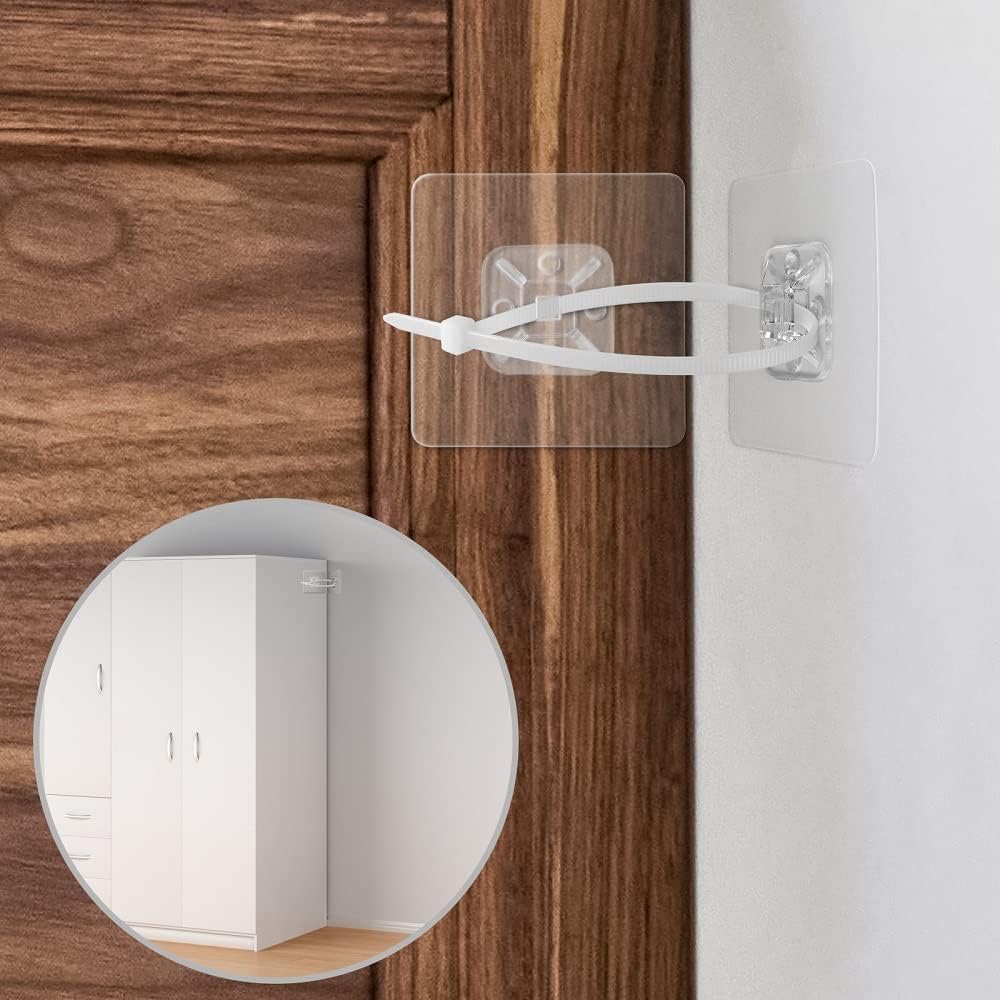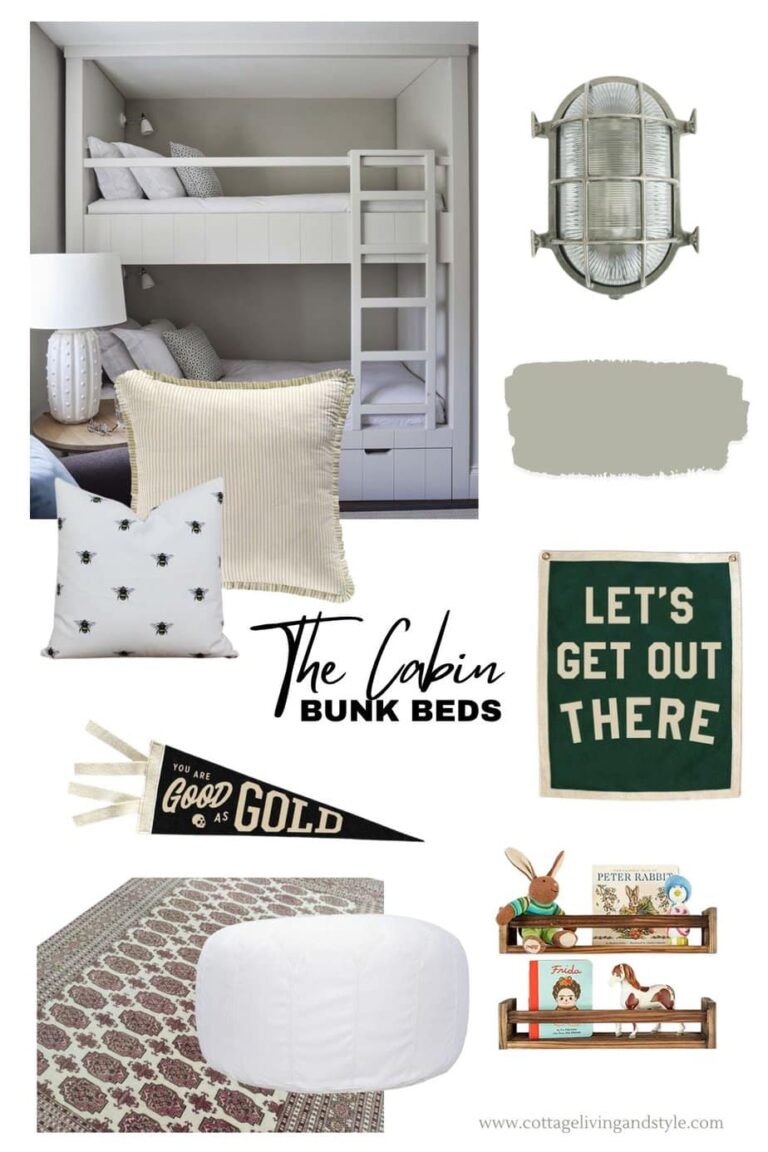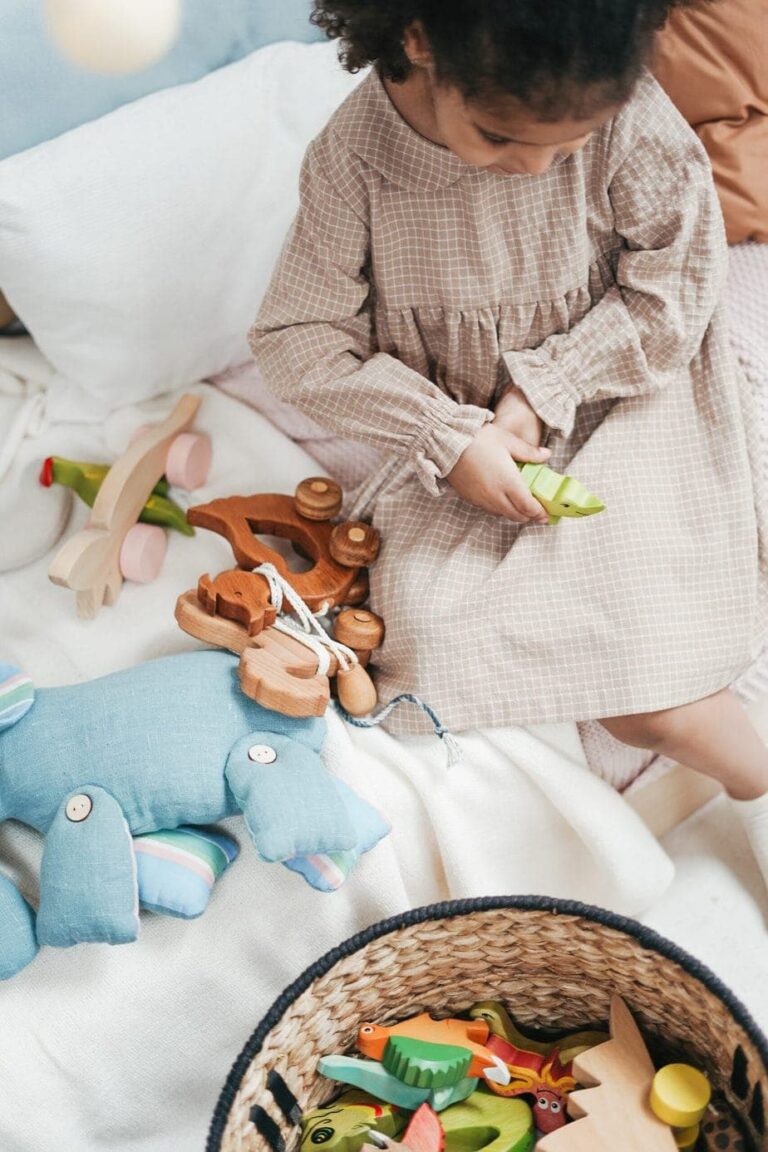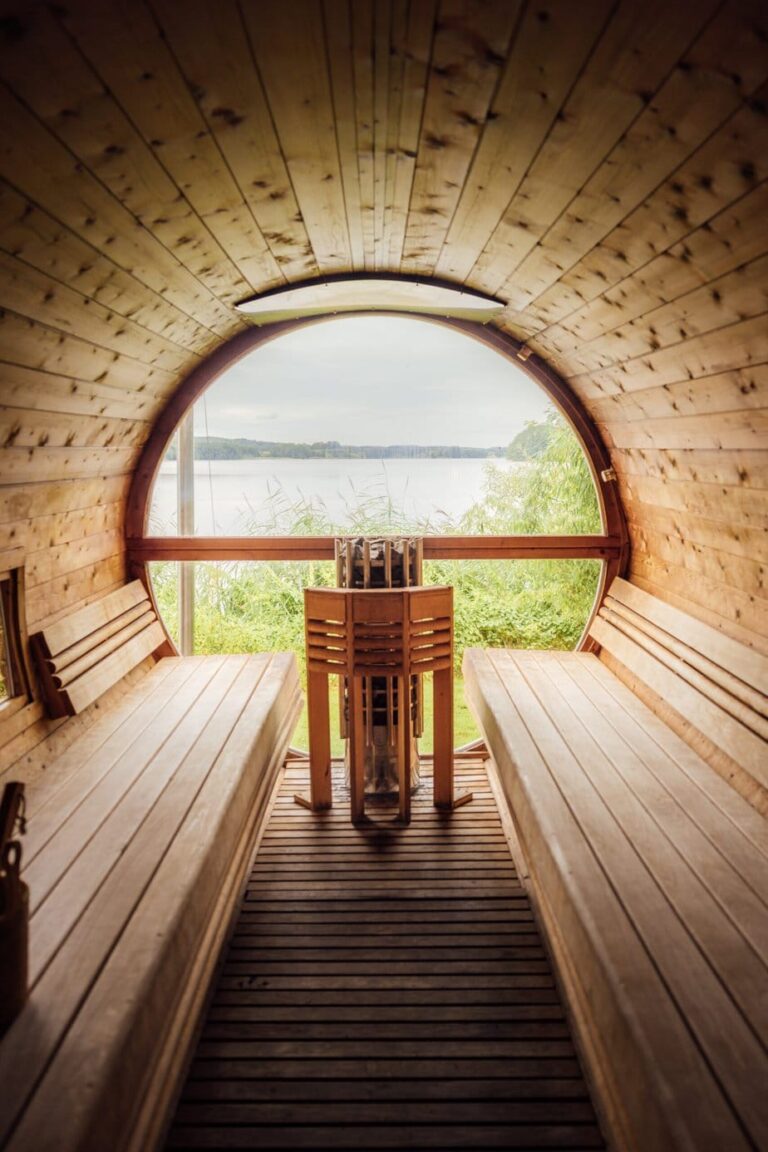Tips for Sharing a Small Room with Your Baby or Toddler
Post Summary: Dive into our latest post filled with creative ideas for parents sharing a small room with their baby, offering clever solutions to maximize space and maintain comfort for the whole family.

Are you a new parent struggling to find space for your baby in your small bedroom? It can be challenging to create a cozy and functional sleeping area for your little one when you have limited space or are not currently able to give them their own room. However, with some creative thinking and smart solutions, you can make the most out of your small room and create a comfortable and safe sleeping space for your baby.
One of the most popular solutions for sharing a small room with a baby is using a bassinet or a mini crib in the master bedroom. These smaller sleeping options take up less space than a full-sized crib and can be easily moved around the room as needed. Plus, many bassinets and mini cribs come with built-in storage options, such as shelves or drawers, which can help you save even more space. In this article, we’ll explore more ideas and tips for sharing a small room with your baby.
Keep reading for the best tips and tricks we learned from sharing a bedroom with our baby and toddler.
Understanding the Basics of Room Sharing
If you are considering sharing a small room with your baby, it’s important to understand the basics of room sharing. Room sharing is when a baby sleeps in the same room as their parents, but not necessarily in the same bed. This is recommended by the American Academy of Pediatrics (AAP) for at least the first six months of a baby’s life, and ideally for the first year. According to healthychildren.org “The AAP recommends room sharing because it can decrease the risk of SIDS by as much as 50% and it’s much safer than bed sharing. Room sharing will also make it easier for you to feed, comfort, and watch your baby” in the middle of the night.
Benefits of Room Sharing
There are several benefits to room sharing with your baby. Firstly, it can make it easier to breastfeed at night. Instead of getting up and walking to another room, you can simply reach over and pick up your baby. Secondly, it can help you keep an eye on your baby and respond quickly if they need you. Finally, it can promote a stronger bond between you and your baby that might not feel the same if they were in their own space.
Best Practices for Safety
While room-sharing can be beneficial, it’s important to follow certain safety guidelines. Firstly, make sure your baby has their own safe sleep space, such as a bassinet or crib. This should be free from any loose bedding, pillows, or toys. Secondly, make sure the room is kept at a comfortable temperature and is well-ventilated. Finally, avoid bed-sharing, as this increases the risk of Sudden Infant Death Syndrome (SIDS). Becoming new parents can be overwhelming enough as it reads, so keep reading for more tips on how to maximize small spaces effectively when children are involved.
If you have a small room, there are still ways to make room-sharing work. You can use a mini crib or a co-sleeper that attaches to your bed. You can also use space-saving furniture and storage solutions to maximize the available space.
By understanding the basics of room sharing and following best practices for safety, you can create a safe and comfortable sleeping environment for your baby.
Maximizing Space in a Small Room
When you’re sharing a small room with a baby, maximizing the available space becomes crucial. Here are some practical ideas for making the most of your limited floor space and storage areas:
Space-Saving Furniture Ideas
Investing in space-saving furniture is a great way to maximize the available floor space in your small room. Consider furniture items that serve multiple purposes.
For example, a crib that doubles as a changing table or a dresser that also functions as a changing station. These types of furniture pieces can save you a lot of space and provide you with everything you need in one convenient location.
Another option is to look for furniture that can be easily folded away or stored when not in use. A foldable crib or a collapsible changing table are great examples of this.
These types of furniture pieces can be easily tucked away when not needed, freeing up valuable floor space in your small room. Using bunk beds down the road is also a great space saving solution that we ourselves implemented at the cottage.
Creative Storage Solutions
When you’re sharing a small room with a baby, storage becomes a crucial issue. You need lots of storage for all the baby’s clothes, diapers, toys, and other essentials. Here are some creative storage solutions that can help you maximize your storage space:
- Use vertical storage solutions like shelves and hanging organizers to make the most of your wall space.
- Invest in storage containers that can slide under the bed or crib to make use of the space underneath.
- Use storage ottomans or benches that double as seating and storage to save space.
- Hang a pegboard on the wall to store baby clothes, toys, and other essentials.
By using these space-saving furniture ideas and creative storage solutions, you can maximize the available space in your small room and create a comfortable and functional living space for you and your baby.
Designing a Shared Room for Comfort and Functionality
When it comes to designing a shared room for you and your baby, there are a few things to keep in mind to ensure comfort and functionality. By choosing the right color palette and incorporating multipurpose elements, you can create a space that meets both your needs.
Choosing the Right Color Palette
When selecting a color palette for your shared room, it’s important to choose colors that are calming and soothing. Soft pastel shades like baby blue, pale pink, and mint green can create a relaxing atmosphere that promotes sleep. Neutral colors like beige, gray, and white can also work well as they create a clean and calming environment.
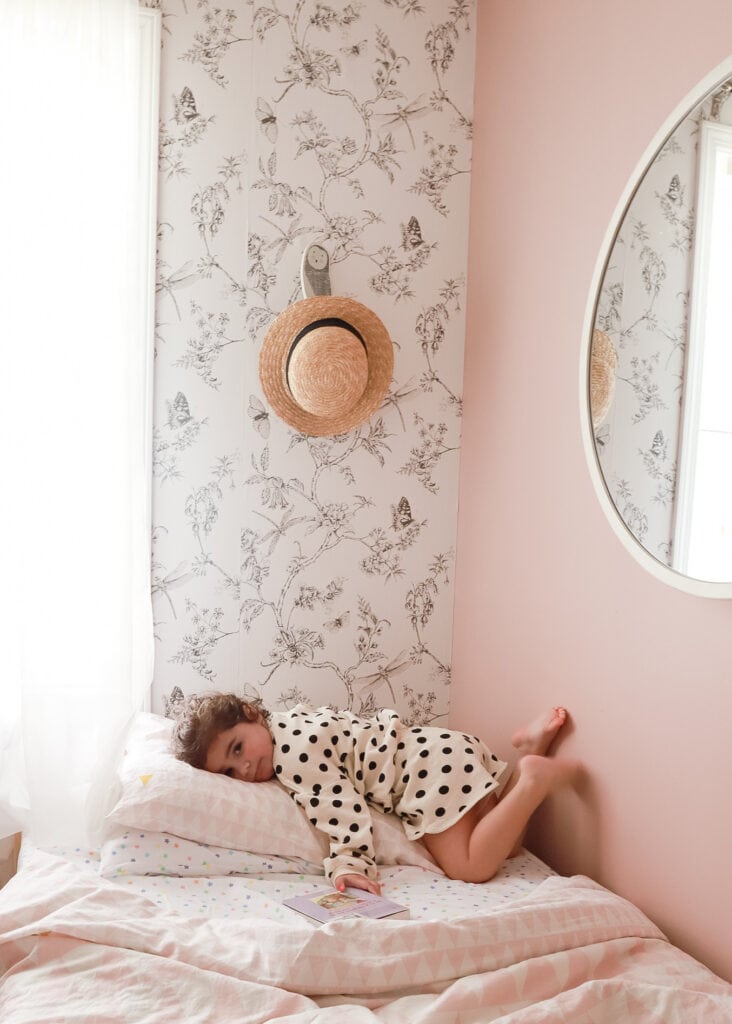
It’s important to avoid bright and bold colors as they can overstimulate your baby and make it difficult for them to sleep. Additionally, it’s a good idea to avoid patterns that are too busy or complex as they can be distracting.
Incorporating Multipurpose Elements
When designing a shared room, it’s important to make the most of the space you have. One way to do this is by incorporating multipurpose elements. For example, a changing table that doubles as a dresser can save space and provide ample storage for your baby’s clothes and accessories.
A crib that converts into a toddler bed can also be a great investment as it can grow with your child and save you from having to purchase a separate bed in the future. Additionally, a glider or rocking chair can provide a comfortable spot for you to nurse or soothe your baby to sleep.
When designing a shared room for you and your baby, it’s important to keep both comfort and functionality in mind. By choosing a calming color palette and incorporating multipurpose elements, you can create a space that meets the needs of both you and your little one.
Furniture and Accessories for a Baby-Friendly Room
When it comes to designing a baby-friendly room, selecting the right furniture and accessories is crucial. Here are some ideas to help you create a comfortable and safe environment for your little one.
Selecting the Appropriate Crib
The baby’s crib is the most important piece of furniture in the room. It is where your baby will spend most of their time sleeping, so it is important to choose a crib that is safe, comfortable, and durable. When selecting a crib, make sure it meets the safety standards set by the Consumer Product Safety Commission (CPSC). Also, consider the size of the crib, as it should fit comfortably in your room without taking up too much space.
Grow-with-Me Crib from Amazon

Another option is to choose a bedside sleeper, which attaches to the side of your bed. This allows you to keep your baby close to you while still providing a separate sleeping space. Bedside sleepers are also convenient for nighttime feedings and diaper changes.
Essential Accessories for Convenience
Aside from the crib, there are other accessories that can make your baby’s room more convenient for both you and your little one. A changing table is a must-have, as it provides a safe and comfortable space for diaper changes. Look for a changing table with ample storage space for diapers, wipes, and other baby essentials.
A rocking chair or glider is also a great addition to a baby’s room. It provides a comfortable spot for you to sit and rock your baby to sleep, and can also be used for feeding and reading bedtime stories.
In addition, consider adding a baby monitor to the room. This allows you to keep an ear (or your eyes) on your little one while they sleep, giving you peace of mind and allowing you to attend to their needs quickly.
Top Selling Baby Monitor

Overall, selecting the right furniture and accessories for your baby’s room can make a big difference in both their comfort and your own. By taking the time to choose quality pieces that meet your needs, you can create a warm and inviting space for your little one to grow and thrive in.
Sleep Training and Bedtime Routines in a Shared Space
If you are sharing a small room with your baby, establishing a consistent bedtime routine is essential for both you and your baby’s sleep. Here are some tips for creating a successful bedtime routine in a shared space.
Establishing a Consistent Bedtime Routine
Creating a consistent bedtime routine is crucial for helping your baby learn when it’s time to sleep. Here are some elements you can include in your bedtime routine:
Bath time
A warm bath can help your baby relax and prepare for sleep.
Diaper change
Make sure your baby has a fresh diaper before bed.
Feeding
Whether you breastfeed or bottle-feed, feeding before bed can help your baby feel full and sleepy.
Storytime
Reading a book or singing a lullaby can be a soothing way to end the day.
It’s important to keep your bedtime routine consistent, even if you’re traveling or staying in a different space. This will help your baby feel secure and comfortable, even in a new environment.
Managing Different Sleep Schedules
If you and your new baby have different sleep schedules, it can be challenging to create a bedtime routine that works for both of you. Here are some tips for managing different sleep schedules in a shared space:
Use a white noise machine
A white noise machine can help drown out any noise that might disturb your baby’s sleep, allowing you to stay up later or wake up earlier without disturbing them.
Use a divider
If possible, use a room divider or curtain to create separate sleeping areas for you and your baby.
Be flexible
If your baby is napping during the day, take advantage of that time to do things you need to do or rest yourself.
Remember, every baby is different, and what works for one family might not work for another. Be patient and flexible, and don’t be afraid to try different things until you find what works for your family.
Creating Separate Zones in a Shared Bedroom
When sharing a small bedroom with your baby, it’s important to create separate zones for sleeping, playing, and relaxing. This not only helps to establish boundaries and promote better sleep, but it also allows you to make the most of the limited space you have. Here are a few ideas for creating separate zones in small spaces and shared rooms.
Using Room Dividers Effectively
Room dividers can be a great way to create separate spaces in a shared bedroom. They come in a variety of styles, materials, and sizes, so you’re sure to find one that works for your space and design preferences. Some popular options include:
Curtains
Hanging curtains from the ceiling can create a cozy nursery nook for your baby.
Bookcases
Placing a bookcase or shelving unit between the bed and the rest of the room can help to create a separate sleeping area.
Screens
Folding screens or room dividers can be used to create a temporary barrier between the bed and the rest of the room.
When choosing a room divider, be sure to consider the size of your room, the amount of natural light, and the overall aesthetic you’re going for.
Designating Individual Areas
In addition to using room dividers, you can also create separate zones by designating specific areas for sleeping, playing, and relaxing. Here are a few ideas to get you started.
- Use rugs or floor mats to define different areas of the room.
- Place a small playpen or activity center in one corner of the room for your baby to play in.
- Create a cozy reading nook by placing a chair and lamp in a corner of the room.
- Hang a mobile or other decorative item above your baby’s crib to create a focal point and define their sleeping area.
By designating individual areas for different activities, you can make the most of your shared bedroom and create a comfortable, functional space for both you and your baby. This is also an important step if your baby is sharing space with an older sibling.
Adapting the Room as the Baby Grows
As your baby grows, their needs change, and so should their room. Here are some ideas for adapting the room as your baby grows.
Transitioning from Crib to Toddler Bed
When your baby outgrows their crib and is ready for a toddler bed, you can make the transition smoother by keeping some things familiar. Use the same bedding and familiar toys to help them feel comfortable in their new bed. You can also add some safety features, such as bed rails, to prevent falls.
3-in-1 Crib Grows with Your Child
Consider rearranging the furniture in the room to accommodate the new bed. You may need to move some items around to create a safe and comfortable sleeping space for your toddler.
Updating the Room for an Older Child
As your child grows older, create a kids’ room and update it to meet their changing needs. You may need to add more storage space for their toys and clothes or create a study area for homework and school projects. Which is what we just did with Penelope’s space, and I’ll be sharing more of that process on the blog soon.

Consider adding some decorations or themes that reflect your child’s interests and personality. This can help create a space that they enjoy spending time in and feel proud of.
You can also involve your child in the process of updating their room. Ask for their input on colors, decorations, and furniture. It will help them feel more involved and excited about their new space.
Overall, adapting the room as your baby grows can help create a safe and comfortable space for them to sleep and play in. With a few simple updates, you can create a room that meets their growing needs and reflects their unique personality.
Safety Considerations and Tips for Parents
As a parent sharing a small room with your baby, safety should be your top priority. Here are some important safety considerations and tips to keep in mind:
Preventing Accidents in a Shared Room
Sharing a small room with a baby can be challenging, but there are steps you can take to prevent accidents. First, make sure that the baby’s sleep space is free from any potential hazards, such as loose bedding, pillows, toys, or cords. These items can pose a suffocation or choking risk to your baby.
You should also ensure that any furniture in the room, such as dressers or bookshelves, are securely anchored to the wall to prevent them from tipping over. These furniture anchor hooks are great and we’ve used them many times.
No Drill, Anti-tip Anchor for Furniture
Keep the room clutter-free and avoid leaving any items on the floor that could cause you or your baby to trip or fall.
Ensuring Safe Sleep for the Baby
Creating a safe sleep environment for your baby is crucial to reduce the risk of Sudden Infant Death Syndrome (SIDS). The American Academy of Pediatrics recommends that babies sleep on their backs on a firm, flat surface with no soft bedding or toys.
When sharing a small room with a baby, it’s important to ensure that their sleep space meets these guidelines. You can use a bassinet, cradle, or portable crib that meets safety standards and fits in your room. Avoid using adult beds, couches, or chairs for your baby’s sleep space, as these can increase the risk of suffocation or entrapment. Baby furniture specifically designed for baby sleep is a must for a newborn baby in a room-share scenario.
In addition, keep the room at a comfortable temperature and dress your baby in appropriate sleep clothing to prevent overheating. Finally, make sure that you can hear your baby if they need you during the night, but avoid bed-sharing as it can increase the risk of SIDS.
By following these safety considerations and tips, you can create a safe and comfortable environment for both you and your baby in a shared room.













